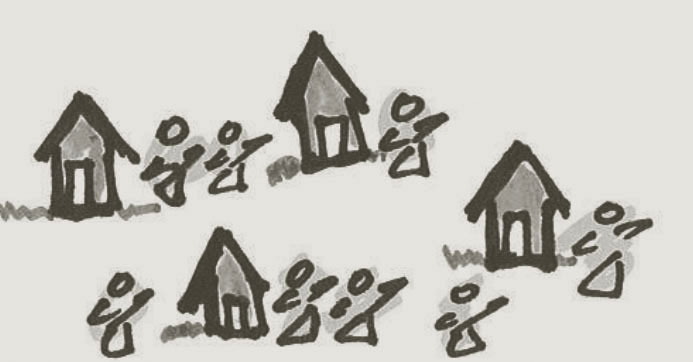Practicing Popular Education with Immigrant Women
Bringing together groups of low-income immigrant women to participate in popular education processes presents its own unique set of challenges. These challenges are magnified when bringing together immigrant and refugee women. In order to effectively facilitate this process, it is imperative to have a clear knowledge of these challenges and the tools needed to confront them.
First of all, it is necessary to account for the numerous tasks these women are responsible for within their families and their communities, leaving them with limited time to involve themselves in public affairs. It is also important to be sensitive to the fact that, for many immigrant and low-income women, participation in public matters is often a new concept. Additionally, it cannot be forgotten that this insertion of women into public life continues to have cultural and social resistance.
Protocols for supporting the increased public participation
of immigrant and refugee women:
• Popular education only works with women who are already organizing in their community
• Allow space for the women to identify the challenges they face by themselves; let them guide the process
• Logistical support such as childcare, transportation, consideration of lost wages, and culturally appropriate food is critical
• It takes time for women with a long history of discrimination to gain confidence
• Learning from one another happens in different ways: sharing cultural traditions and practices, sharing indigenous knowledge, sharing food, songs, etc.
• Make sure your intervention is for the betterment of the women, their families and their community, and is not disruptive to their lives; social change has to be led by them on their own terms
• Provide the venue women need to accomplish their common action, even if it is not a major political action
• Provide capacity-building opportunities in areas they identify as necessary to continue strengthening their leadership skills and group formation
• Encourage the women to share their knowledge; doing so validates their own experiences
The women in our group proposed to work together on a calendar to tell their stories, and the impact of their efforts was remarkable. It allowed them to tell their stories both inside and outside their own communities, validated their leadership, gave them confidence both individually and as a group, and motivated them to stay together and embark on another collective effort.
“The active participation of indigenous women in public affairs
is relatively new. When supporting the women in this change of roles,
it is essential to understand how to navigate cultural protocols,
starting with the women’s families.”
~Rosa Lopez, Founder and Owner, Colectivo Sabor a Mi Tierra


Principles
• Start from people’s life experiences and connection to where they live, their history, their culture, their world vision, and perspectives for change

Tips
• Provide a safe and welcoming space
• Makes sure to offer professional interpreting to facilitate multilingual communication
• Be mindful of faith
and religious practices

References
• The Theory Behind Our Work booklet
• Practicing Popular Education with Indigenous Groups, Youth and Mixed Status Families tools
Unraveling Our Stories:
An Interethnic Gender Analysis
As part of our commitment to working with women, we engaged a group of women in a gender analysis. This was only after the women had worked together for a long period of time, established trust, and were ready to engage in reaching an understanding of gender-imposed social and cultural roles. This tool includes an exercise we practice for doing interethnic gender analysis.
Organize the women in three groups: one group will focus on constructing a story from home, the second group will focus on a story of migration, and the third will tell a 1.5 or second generation story. The stories are intended to illustrate how the roles men and women play are determined by cultural, social and economic factors rather than biological reasons. This exercise should guide participants to an understanding of how women’s societal roles are largely defined by cultural context.
In this exercise, the family is used as frame of reference for considering the role family plays in transmitting and reinforcing gender roles. It is within their own families that women first experience the inequalities of disadvantage and privilege amongst men and women. Oftentimes when there is reference to women’s issues, the family is at the center of the conversation.
These stories are meant to unravel what identifies this group of women as immigrants and refugees, and the challenges they confront by carrying these new identities. Through analyzing the stories, the women take a deeper look at the changes happening in their families after migration and exposure to different cultural practices, along with the benefits and conflict created by this exposure.
The first story takes the women to their place of origin and what life looked like before migrating: their family structure, including relationships with parents, children and siblings; cultural values inside the family; family economic and social organizations; conflict resolution skills; community and cultural traditions at home; and familial and community expectations of women.
The second story explores their reasons for migrating to the U.S. and how their experience impacted the family. It askes the following questions: did they come together or were they separated; what was their experience like upon arriving in the U.S.; what changes occurred in their family; did the roles of the parents change, i.e., did both parents have to work; how were relationships impacted; what conflicts did they encounter?
The third story focuses on the first generation of women born and raised in the U.S. and how she views her family, particularly her parents and sisters.
Questions to Spur Memories from Home
• What memories do you have from your parents, their activities, their relationship, the way they related to their children?
• What have you learned from your parents that you appreciate the most?
• What are the most important values you inherited from your parents?
• How was your family organized?
• Did the parents and children have specific activities or tasks in the home?
• Did you ever witness violence in the house; if so, how did the family respond to it?
• What do you remember the most about your siblings;
how do you relate to them?
• Was the family economically organized in a certain way? Did both parents work outside the home? Did the children work?
• What traditions do you remember most?
• What adolescent experiences impacted you the most?
• What were your parents’ expectations of you?
• What memories do you have of dating?
“Through dialogues and popular education, we shared our stories
and life experiences as immigrants and refugees. We also analyzed
the problems that affect us and explored ways of solving them
in an ongoing effort to better our lives.”
~Immigrant Women:
A Road to the Future


Principles
• We value immigrants as thinking beings and encourage the development of new leadership, including women and youth

Tips
• When working with women of color and those from poor communities, let them arrive on their own to a place where they feel ready to do a gender analysis

References
• The Theory Behind Our Work booklet
• Practicing Popular Education With Immigrant Women Tool
